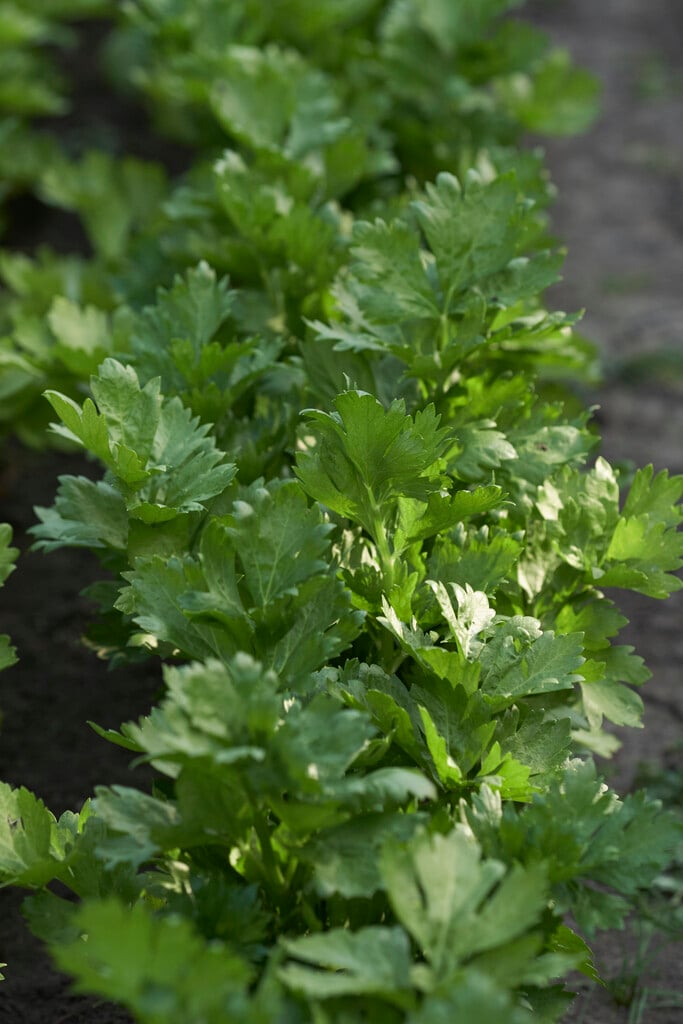Apium graveolens
celery
This is the wild plant from which celery and celeriac has been bred. It is a biennial of damp ground which can tolerate salty conditions. In the first year, it grows a clump of bright green aromatic leaves and in the second year, blooms with clusters of small white flowers. These ripen to light brown seeds. Leaves and seeds can be eaten in small quantities to flavour food
Other common names
achcelery seed
see moremarche
marsh parsley
smallage
smalledge
sweet parsley
Venus's herb
wild celery
ache
mers
Size
Ultimate height
0.1–0.5 metresTime to ultimate height
1–2 yearsUltimate spread
0.1–0.5 metresGrowing conditions
Moisture
Moist but well–drained, Poorly–drainedpH
Acid, Alkaline, NeutralColour & scent
| Stem | Flower | Foliage | Fruit | |
| Spring | Green | |||
|---|---|---|---|---|
| Summer | White | Green | ||
| Autumn | Green | Brown | ||
| Winter | Green |
Position
- Full sun
- Partial shade
Aspect
East–facing or North–facing or South–facing or West–facing
Exposure
Sheltered Hardiness
H6Botanical details
- Family
- Apiaceae
- Native to GB / Ireland
- Yes
- Foliage
- Semi evergreen
- Habit
- Columnar upright
- Potentially harmful
- Harmful to skin with sunlight. Wear gloves and other protective equipment when handling
- Genus
Apium can be annual, biennial or perennial herbaceous plants, with leaves divided into three leaflets, or pinnate; in summer, tiny white flowers are borne in umbels
- Name status
Correct
How to grow
Cultivation
Grow in reliably moist soil in full sun or light shade. See celery cultivation for more advice
Propagation
Propagate by seed. See sowing vegetable seeds
Suggested planting locations and garden types
- Cottage and informal garden
Pruning
No pruning required
Pests
May be susceptible to slugs and snails and and celery leaf miner
Diseases
May be susceptible to celery leaf spot
Love gardening
Sign up to receive regular gardening tips, inspiration, offers and more
View our Privacy Policy
Get involved
The Royal Horticultural Society is the UK’s leading gardening charity. We aim to enrich everyone’s life through plants, and make the UK a greener and more beautiful place.

